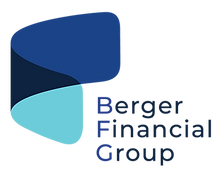Planning for retirement is one of the most significant financial responsibilities you’ll face in your lifetime. The choices you make today can greatly influence your financial security in your golden years. When it comes to retirement income, the extent of your responsibility depends on various factors, including whether you have access to a pension, your reliance on social security, and your personal savings and investment strategies. This article explores the different choices people can make regarding their financial future and the implications of these choices.
The Pension Plan: Shared Responsibility
What is a Pension?
A pension plan is a retirement plan that requires an employer to contribute to a pool of funds set aside for an employee’s future benefit. The employer is responsible for managing the investment and ensuring that the funds are available to pay the promised benefits when employees retire.
Benefits of a Pension
- Reduced Personal Responsibility: With a pension, the employer assumes the investment risk and the responsibility for managing the funds.
- Guaranteed Income: Pensions typically provide a guaranteed monthly income, offering financial stability.
- Peace of Mind: Knowing that you have a reliable source of income in retirement can reduce financial stress.
Costs of a Pension
- Reduced Current Compensation: Pension benefits are often funded by reducing your current salary or other compensation.
- Limited Control: Employees have little to no control over how the pension funds are invested.
- Dependence on Employer Solvency: The security of a pension depends on the financial health of the employer.
Self-Funded Retirement: Full Responsibility
What Does It Mean to Be Fully Responsible?
If you don’t have access to a pension, you are fully responsible for ensuring you have enough income to support yourself in retirement. This includes saving, investing, and managing your funds wisely to create a sustainable income stream.
Benefits of Self-Funded Retirement
- Control Over Investments: You have the freedom to choose how and where to invest your money.
- Potential for Higher Returns: With wise investment choices, you can potentially achieve higher returns than a pension plan.
- Flexibility: You can adjust your savings and investment strategies as your financial situation and goals change.
Challenges of Self-Funded Retirement
- Investment Risk: You bear all the risks associated with investing, including market volatility and the possibility of losing money.
- Discipline Required: Successful self-funding requires strict saving and disciplined investment strategies.
- Longevity Risk: There’s a risk that you might outlive your savings, requiring careful planning and possibly adjustments in spending.
Social Security: A Safety Net
Role of Social Security
Social Security provides a base level of retirement income that most Americans can rely on. It’s funded through payroll taxes and provides benefits based on your earnings history.
Benefits of Social Security
- Guaranteed Income: Social Security provides a stable, inflation-adjusted income.
- Universal Coverage: Almost all workers are covered by Social Security, making it a widespread safety net.
- Supplement to Other Income: Social Security can supplement other retirement income sources, reducing the amount you need to save personally.
Limitations of Social Security
- Insufficient Alone: Social Security benefits alone are often not enough to maintain your pre-retirement standard of living.
- Uncertainty: Future changes to the Social Security system could impact benefits.
- Income Limits: There are caps on the amount of income subject to Social Security taxes, which can limit benefits for high earners.
Balancing Your Retirement Income Sources
Combining Pensions, Personal Savings, and Social Security
Many people will rely on a combination of these sources for their retirement income. The key is to balance them in a way that maximizes security and flexibility.
- Pensions and Social Security: If you have a pension, Social Security can provide additional income, reducing the need for personal savings.
- Savings and Investments: For those without a pension, building a robust portfolio of retirement accounts (like IRAs and 401(k)s) is crucial.
- Diversification: Diversifying your retirement income sources can help mitigate risks and provide more stable income.
Making the Right Choice for You
Your ideal retirement income strategy depends on your individual circumstances, including your risk tolerance, financial goals, and retirement timeline. Consider consulting with a financial advisor to develop a personalized retirement plan that aligns with your needs and aspirations.
Deciding how much of your retirement income you want to be responsible for involves evaluating the availability and reliability of different income sources, such as pensions, personal savings, and Social Security. By understanding the benefits and challenges of each option, you can make informed decisions to secure your financial future. Ultimately, a well-balanced approach that combines multiple income streams can provide the best assurance of a comfortable and worry-free retirement.




